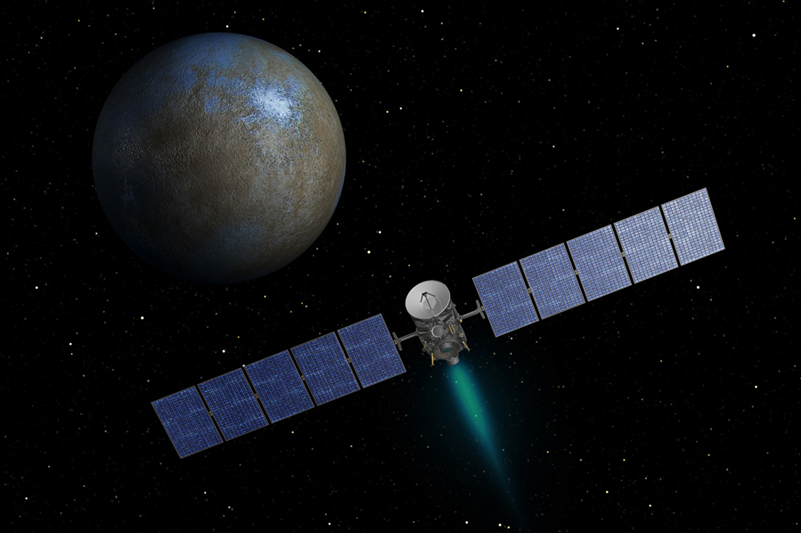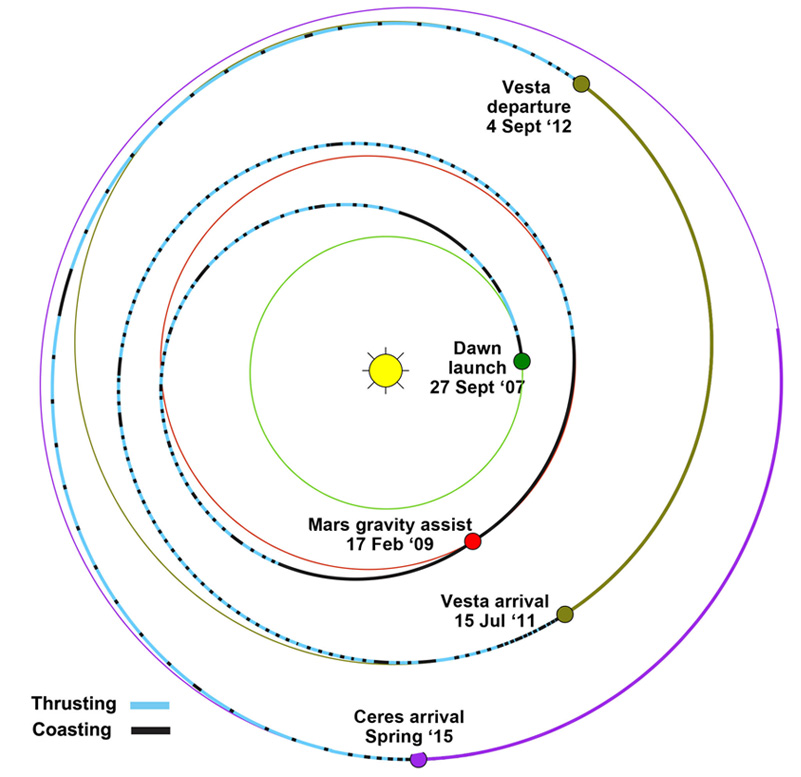Dawn Mission

Credits: Artist conception, credit NASA/JPL-Caltech, NASA/Dawn Mission site
The Dawn spacecraft entered the asteroid belt and orbited and explored the giant protoplanet Vesta in 2011-2012. As of August, 2015, it is in orbit about and exploring a second new world, dwarf planet Ceres.

Credits: NASA/Dawn Mission site
The Dawn spacecraft was launched on September 27, 2007 and achieved orbit around Vesta on July 15, 2011. It used a gravity boost from Mars in February 2009 to assist on its journey to the asteroid belt. Leaving its Vesta orbit on September 4, 2012 it reached Ceres on March 6, 2015. Among its instruments are framing cameras, a visible and infrared mapping spectrometer, and gammma and neutron detectors.
Dawn accomplished the largest propulsive acceleration of any spacecraft to date, with a change in velocity of more than 4.2 miles per second (6.7 kilometers per second), due to its ion engines. The engines expel ions to create thrust and provide higher spacecraft speeds than any other technology currently available. The Dawn ion propulsion system ionizes xenon atoms with an electron beam, accelerates the resulting ions with >1000 volts to achieve an ejection speed as high as 40 km/s (89,000 mi/hr), which is about 10 times the ejection speed for typical propellants. This leads to an efficiency high enough that it can be powered by the energy collected by the onboard solar collectors as long as the spacecraft is less than twice the Earth's distance from the Sun.
Solar System Illustration
Solar System Concepts
| HyperPhysics********** Astrophysics | R Nave |